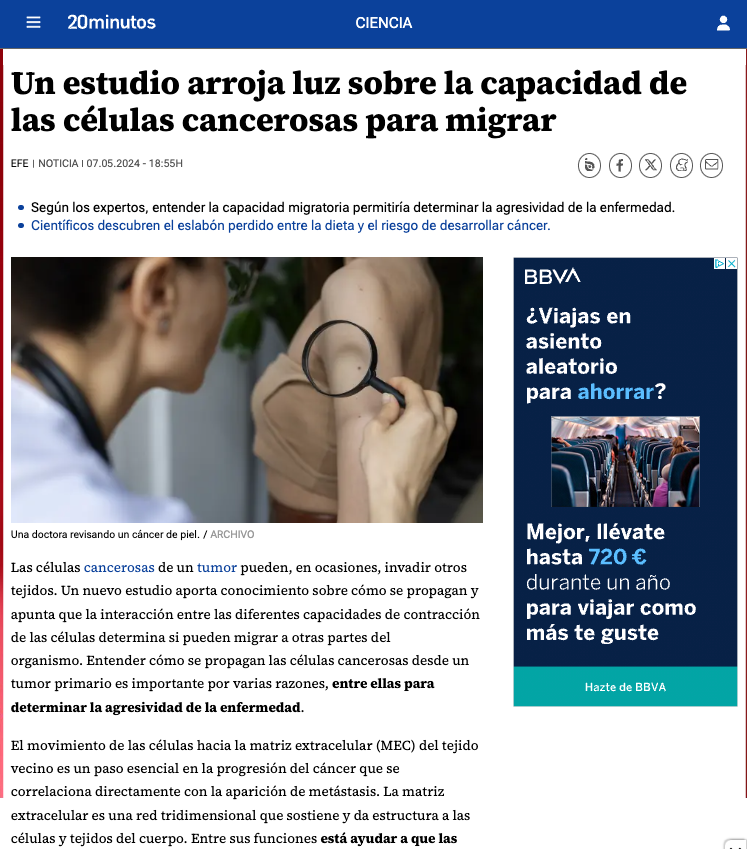ABOUT
Tissues in our body can be extremely soft such as breast or brain, or very stiff such as bone. Cells in our body constantly interact mechanically with such tissues, exerting, transmitting, withstanding, and detecting forces. This mechanical interaction with the environment regulates how cells proliferate, differentiate, and move, and regulates development, tumorigenesis or wound healing.
Our research aims at unraveling – and re-engineering – the molecular mechanisms by which cells detect and respond to mechanical stimuli like forces or tissue rigidity, triggering downstream cell responses.
Just like biochemical stimuli initiate signaling cascades, mechanical forces affect the links and conformation of a network of molecules connecting cells to the extracellular matrix. This molecular and cellular response to force constitutes the phenomenon of mechanotransduction.
To study mechanotransduction, we combine biophysical techniques like magnetic and optical tweezers, Atomic Force Microscopy, traction microscopy, and microfabricated force sensors with molecular biology, advanced optical microscopy, and theoretical modelling.
Sensing the environment: Using this multi-disciplinary approach, we have unveiled a molecular mechanism that cells employ to detect and respond to the rigidity of their environment, which could be crucial in breast tissue and breast cancer (Elosegui-Artola et al., 2016 Nat. Cell Biol., and Elosegui-Artola et al. 2014, Nature Mater.). This mechanism is mediated by what is known as a “molecular clutch”: in a surprising analogy with a car engine, cells can be understood as a molecular network that can engage and disengage from its environment, just as the clutch of a car. This affects force transmission from the environment to cells, and also within different cell components. We are also expanding on the idea of the molecular clutch, to explore how cell molecular engines sense not only mechanical rigidity, but other important parameters from their environment: for instance, the composition and distribution of ligands in the extracellular matrix, or other cells. In this regard, we uncovered that this concept can explain how cells sense the spatial distribution of ligands in the extracellular matrix (Oria et al., Nature 2017). We have also demonstrated that cell-cell force transmission, mediated by a molecular clutch, is essential for cells to sense gradients in stiffness (Sunyer et al., Science 2016, in collaboration with the group of Xavier Trepat).
Nuclear mechanotransduction: Forces applied to cells are transmitted all the way to the cell nucleus, where they affect its function. We are studying how this force transmission affects the dynamics of transcriptional regulators, such as YAP (Elosegui-Artola et al., 2017, Cell), and how this affects cell function.
The membrane as a mechanosensor: Due to its mechanical properties, the plasma membrane itself can respond to forces and act as a mechanosensor. Recently, we have shown that cell membranes can use purely physical principles to adapt their shape in response to mechanical forces (Kosmalska et al., 2015, Nat. Commun.). We are currently studying how cells harness this physical membrane behavior to respond to signals from their environment.
Ultimately, when we determine the molecular mechanisms that communicate cells with their environment, we will understand how forces determine development when things go right, and tumor formation when they go wrong.
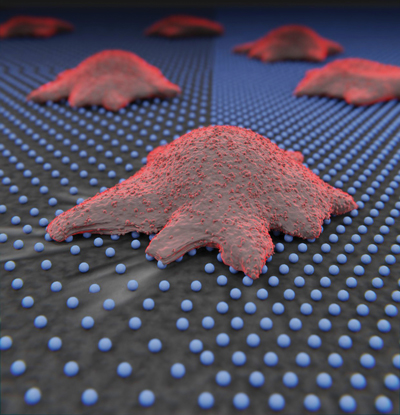
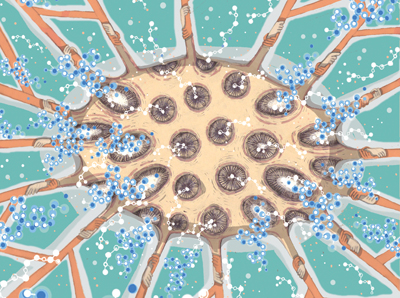
Video: How tissue stiffness activates cancer
STAFF
The following is a list of the current staff members of the research group:
PROJECTS
| NATIONAL PROJECTS | FINANCER | PI |
|---|---|---|
| MECNUC · Estudio del control mecánico de la localización nuclear de proteínas (2020-2023) | MINECO Retos investigación: Proyectos I+D | Pere Roca-Cusachs |
| BLOCMEC Development of small molecules to block mechanotransduction for pancreatic cancer therapy (2021-2023) | MICIU, Proyectos Pruebas de Concepto | Pere Roca-Cusachs |
| INTROPY INhibiting mechanoTRansduction for Oncology theraPY (2021-2023) | ACCIO, Tecniospring Industry | Mamatha Nijaguna |
| INTERNATIONAL PROJECTS | FINANCER | PI |
|---|---|---|
| MECHANOCONTROL · Mechanical control of biological function (2017-2021) | European Commission, FET Proactive | Pere Roca-Cusachs |
| TALVIN · Inhibiting mechanotransduction for the treatment of pancreatic cancer (2018-2021) | European Commission, FET Innovation Launchpad | Pere Roca-Cusachs |
| MECHANOSITY Mechanical regulation of cellular behaviour in 3D viscoelastic materials (2019-2022) | European Commission, MARIE CURIE | Alberto Elosegui |
| PRIVATELY-FUNDED PROJECTS | FINANCER | PI |
|---|---|---|
| Mech4Cancer · Enabling technologies to map nuclear mechanosensing: from organoids to tumors (2020-2023) | Obra Social La Caixa Health Research Call | Pere Roca-Cusachs |
| Understanding YAP-mediated mechanotransduction in pancreatic cancer (2020-2023) | Fundació La Marató de TV3 | Pere Roca-Cusachs |
| Understanding and measuring mechanical tumor properties to improve cancer diagnosis, treatment, and survival: Application to liquid biòpsies (2017-2022) | Obra Social La Caixa | Pere Roca-Cusachs |
| FINISHED PROJECTS | FINANCER | PI |
|---|---|---|
| Desarrollo de una terapia innovadora para el tratamiento de los tumores sólidos mediante la inhibición de la mecanotransducción (2018-2020) | MINECO, Subprograma Retos-Colaboración | Pere Roca-Cusachs |
| Understanding and measuring mechanical tumor properties to improve cancer diagnosis, treatment, and survival: Application to liquid biopsies (2017-2020) | Obra Social La Caixa | Pere Roca-Cusachs |
| IMREG El sistema acoplado entre integrinas y proteínas adaptadoras como regulador mecánico del comportamiento celular (2016-2020) | MINECO, Proyectos I+D Excelencia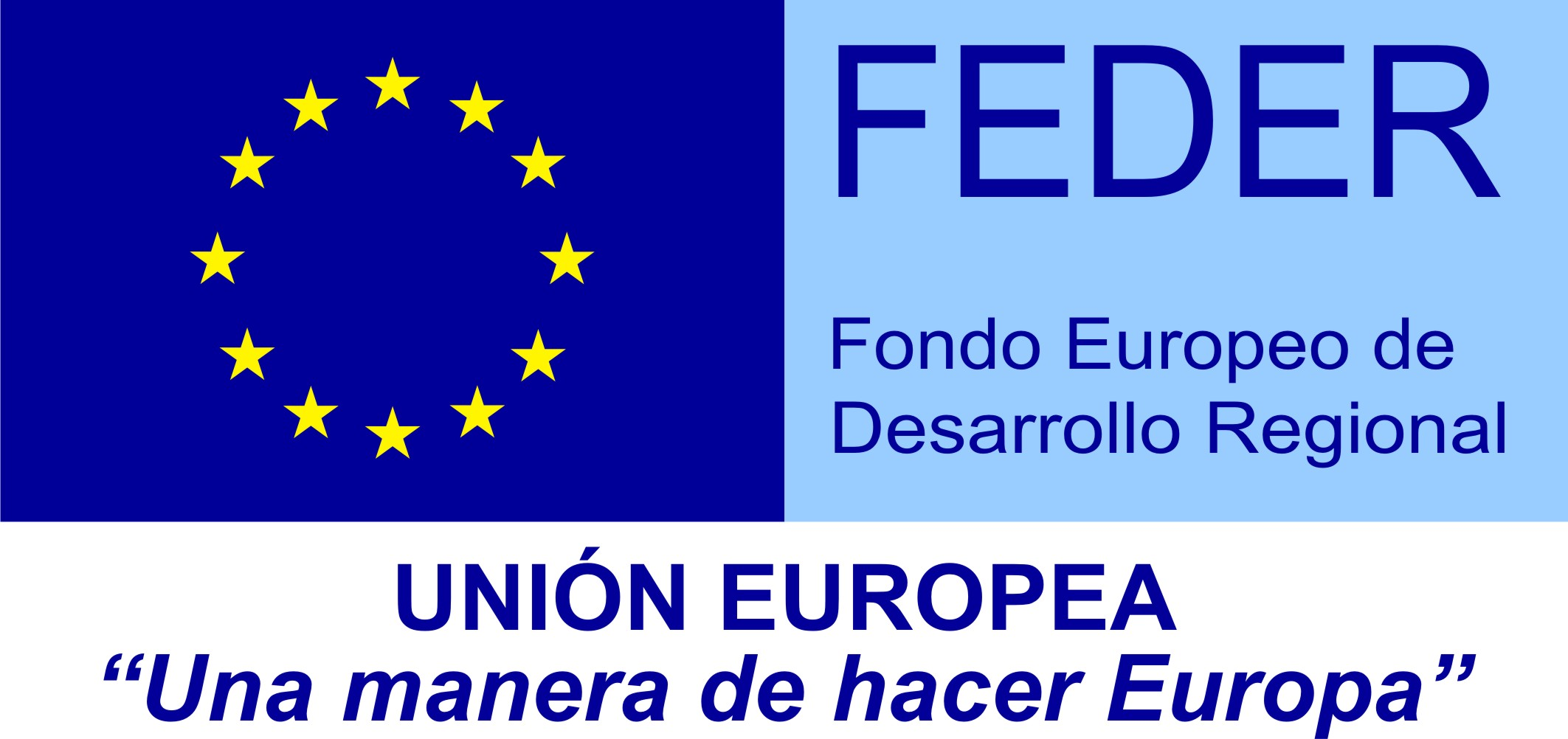 | Pere Roca-Cusachs |
| MECHANOMEMBRANE Redes mecanoquímicas en la membrana plasmática (2017-2018) | MINECO, Subprograma Estatal de Generación de Conocimiento “EUROPA EXCELENCIA” | Pere Roca-Cusachs |
| Stromal stiffness in tumor progression (2014-2017) | Fundació La Marató de TV3 | Pere Roca-Cusachs |
| MECBIO Red de Excelencia en Mecanobiología (2014-2016) | MINECO, Subprograma Estatal de Generación de Conocimiento “REDES DE EXCELENCIA” | Pere Roca-Cusachs |
| Inhibiting mechanostransduction as a novel therapy in the treatment of solid tumors (2017-2018) | Obra Social La Caixa | Pere Roca-Cusachs |
PUBLICATIONS
Click here for a list of publications by Pere Roca-Cusachs with IBEC affiliation.
Click here for a full list of publications including those affiliated to other organisations.
EQUIPMENT
- Confocal Microcopy
- Traction Microscopy
- Live cell fluorescence microscopy
- Cell stretching
- Cell culture
- Magnetic Tweezers
- Atomic Force Microscopy
- Surface Micro/Nano-patterning
- Optical tweezers
COLLABORATIONS
- Dr. Nils Gauthier
Mechanobiology Institute, Singapore - Prof. Miguel Ángel del Pozo
Centro Nacional de Investigaciones Cardiovasculares (CNIC), Madrid - Prof. Marino Arroyo
UPC, Barcelona - Prof. Ada Cavalcanti
University of Heidelberg, Germany - Satyajit Mayor
National Centre for Biological Sciences, Bangalore, India - Sergi Garcia-Manyes
King’s College, London, UK - Louise Jones
Barts Cancer Institute, London, UK - Aránzazu del Campo
INM Saarbrücken, Germany - Patrick Derksen
UMC Utrecht, the Netherlands - Johanna Ivaska
University of Turku, Finland - Jacco van Rheenen
Netherlands Cancer Institute, Netherlands - Isaac Almendros and Ramon Farré
UB, Barcelona - Marc Martí-Renom
CNAG, Barcelona - Marc Güell
UPF, Barcelona - Francisco Real
CNIO, Madrid - Jonas Ries
Max Perutz labs, Vienna
Clinical collaborations
- University Medical Centre Utrecht
- Vall d’hebron Institute of Oncology
NEWS
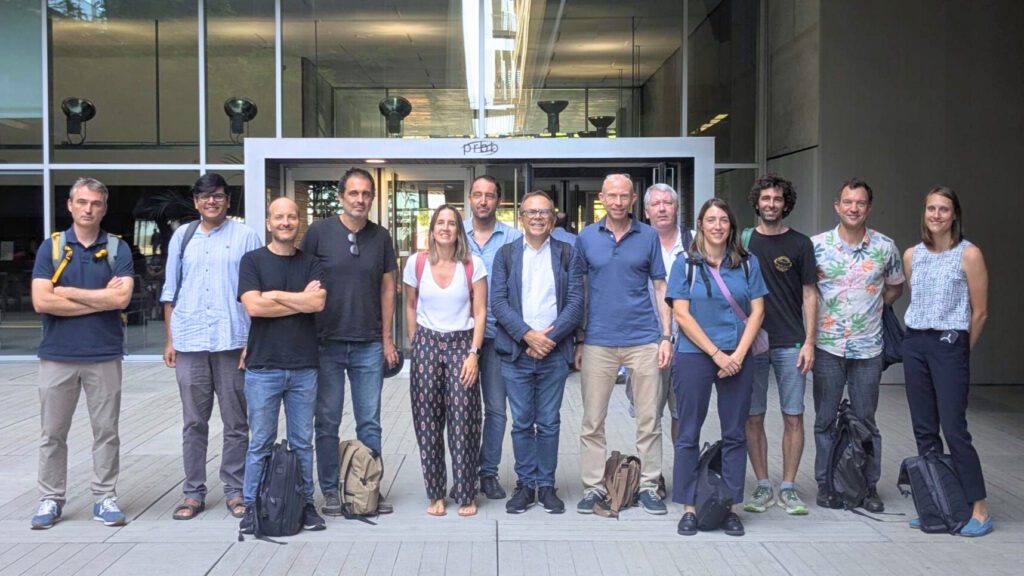
L’IBEC i l’EMBL Barcelona coorganitzen una jornada de col·laboració per explorar sinergies
L’Institut de Bioenginyeria de Catalunya (IBEC) i el Laboratori Europeu de Biologia Molecular (EMBL) han celebrat avui una jornada de “matchmaking”. L’esdeveniment ha reunit investigadors i investigadores destacades d’ambdós centres per tal de fomentar la creació de noves connexions i promoure el diàleg científic.
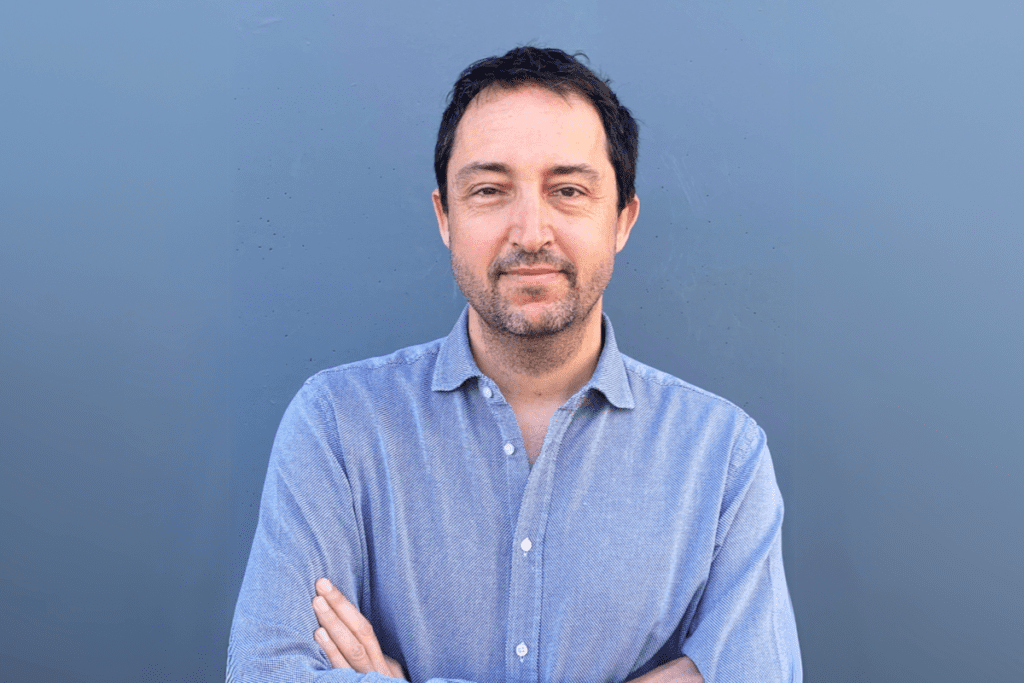
INTROPY: Un nou enfocament en la teràpia contra el càncer mitjançant la inhibició de la mecanotransducció
L’investigador principal de l’IBEC Pere Roca-Cusachs ha obtingut una “ERC Proof of Concept Grant”. Es tracta d’un prestigiós finançament que concedeix el Consell Europeu de Recerca per explorar el potencial comercial i social de projectes de recerca duts a terme en institucions europees. El projecte de Roca-Cusachs, INTROPY, s’enfoca en la inhibició de la mecanotransducció com a potencial teràpia contra el càncer o la fibrosi.

Postdoctoral Researcher at the Cellular and Molecular Mechanobiology Research Group Unit
Ref: PR_PR //Deadline : 03/02/2025
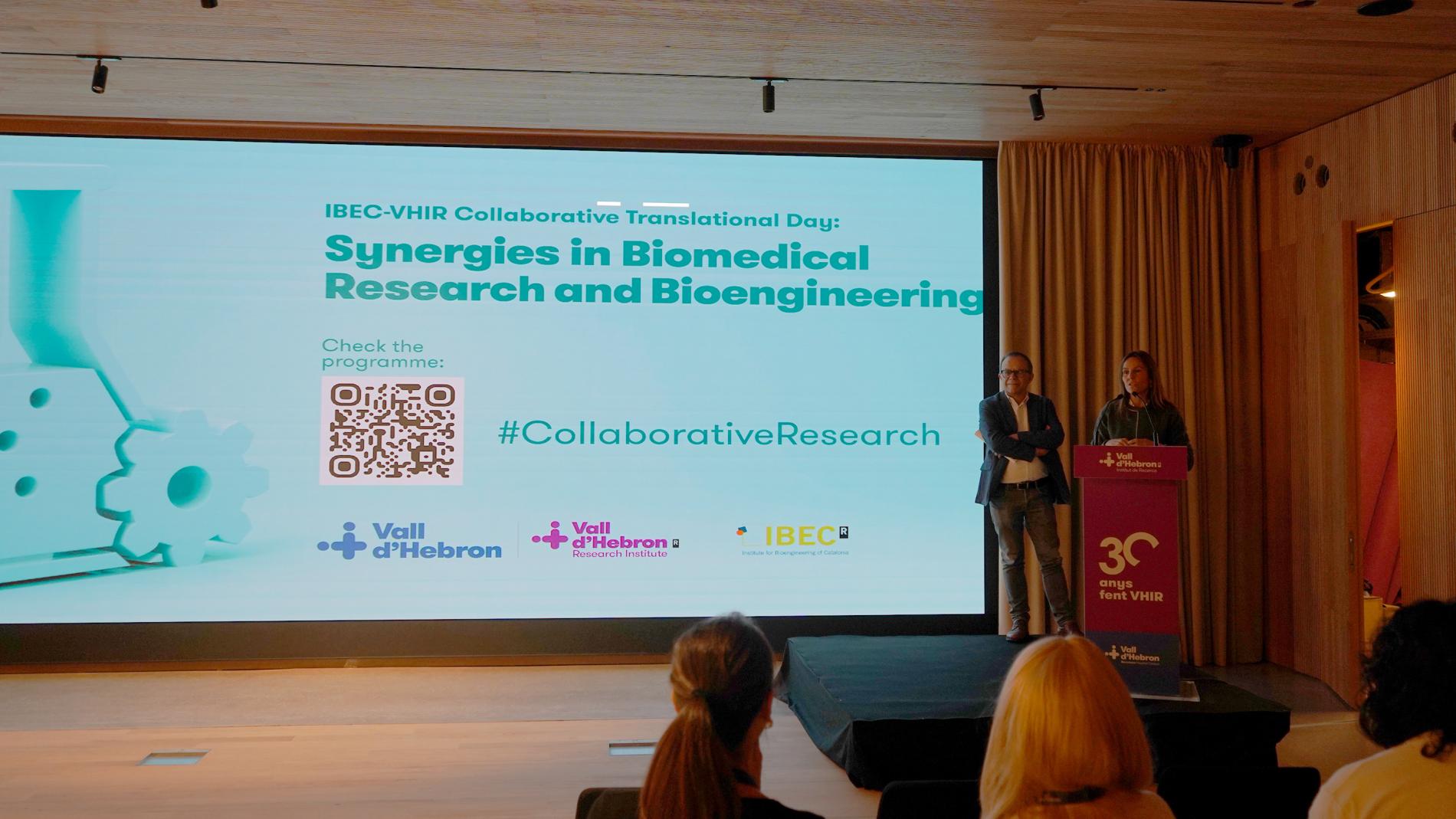
L’IBEC i el VHIR celebren una jornada de col·laboració per fomentar les sinergies
La 1a Jornada Col·laborativa Translacional entre el Vall d’Hebron Institut de Recerca (VHIR) i l’Institut de Bioenginyeria de Catalunya (IBEC), celebrada el 21 de novembre, ha estat una oportunitat per conèixer els projectes i les línies de recerca d’ambdues institucions i promoure la interacció entre els professionals.

La viscositat dels materials, clau en la diferenciació cel·lular
Un estudi liderat per l’IBEC ha desvetllat com les cèl·lules mare mesenquimàtiques responen a la viscositat del seu entorn, un aspecte fonamental en el seu procés de diferenciació. Publicada a Nature Communications, aquesta recerca aporta nous coneixements que podrien revolucionar el disseny de biomaterials per a aplicacions en medicina regenerativa.
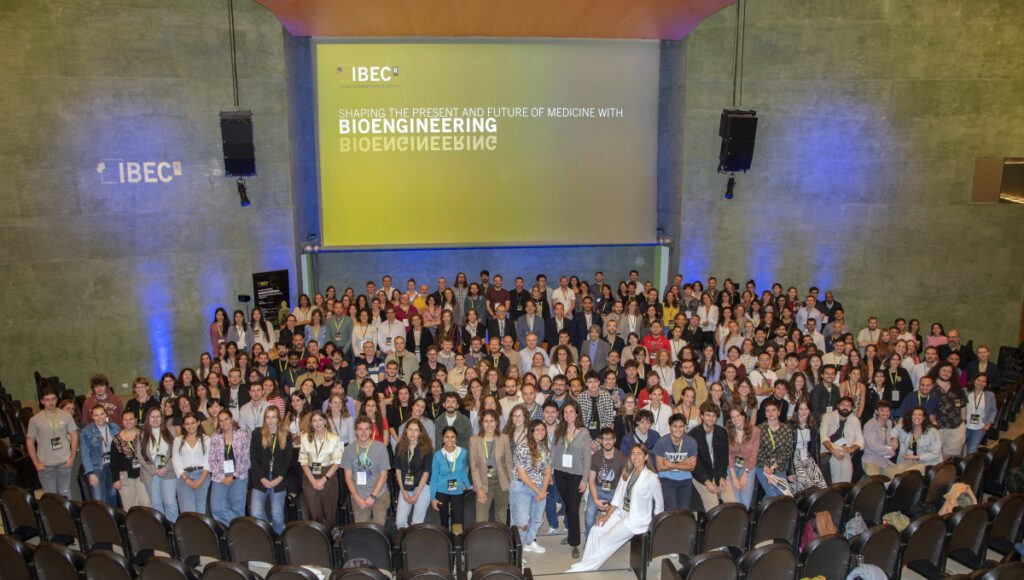
Bioenginyeria per a les teràpies emergents i avançades en el 17è Simposi de l’IBEC
El 17è Simposi anual de l’IBEC es va centrar en ‘Bioenginyeria per a les Teràpies Emergents i Avançades’, una de les àrees clau d’aplicació de l’IBEC. Van ser prop de 300 les persones assistents a l’esdeveniment, entre les quals es trobaven investigadors locals i internacionals. Un ambient multidisciplinari en el qual experts d’altres centres i la mateixa comunitat de l’IBEC van tenir l’oportunitat de presentar els seus projectes i intercanviar coneixement.
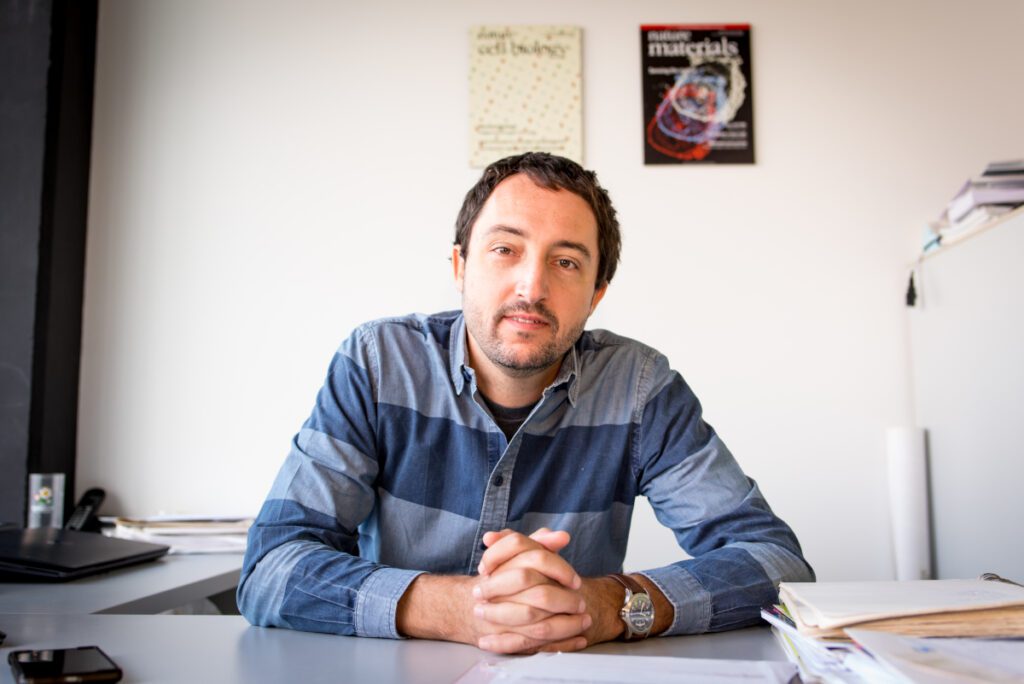
Pere Roca-Cusachs rep per segona vegada la distinció del programa ICREA Acadèmia
L’investigador de l’IBEC Pere Roca-Cusachs ha estat guardonat amb la distinció “ICREA Acadèmia” que atorga la Institució Catalana de Recerca i Estudis Avançats (ICREA). El líder del grup de Mecanobiologia cel·lular i molecular a l’IBEC, ha rebut el premi en la categoria de Ciències de la Vida i de la Salut.
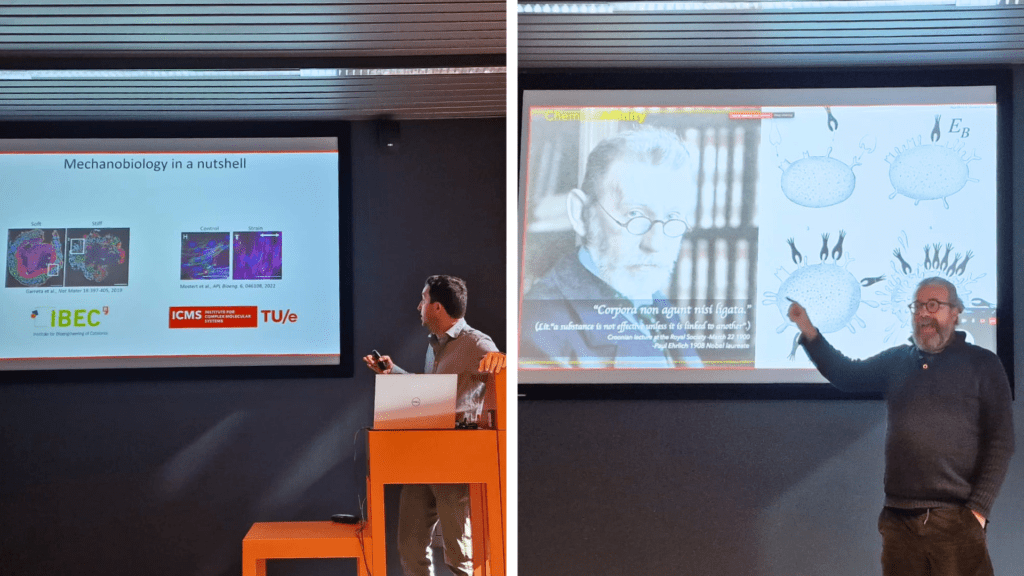
L’IBEC i l’ICMS es Retroben en el seu Simposi Anual en Col·laboració
Avui, 14 de març, s’ha celebrat el simposi conjunt ICMS-IBEC. Un esdeveniment coorganitzat per l’IBEC i l’Institut de Sistemes Moleculars Complexos (ICMS). Durant la jornada, investigadors de l’IBEC i de l’ICMS han compartit les seves àrees de recerca, buscant enfortir els llaços científics entre ambdues institucions.
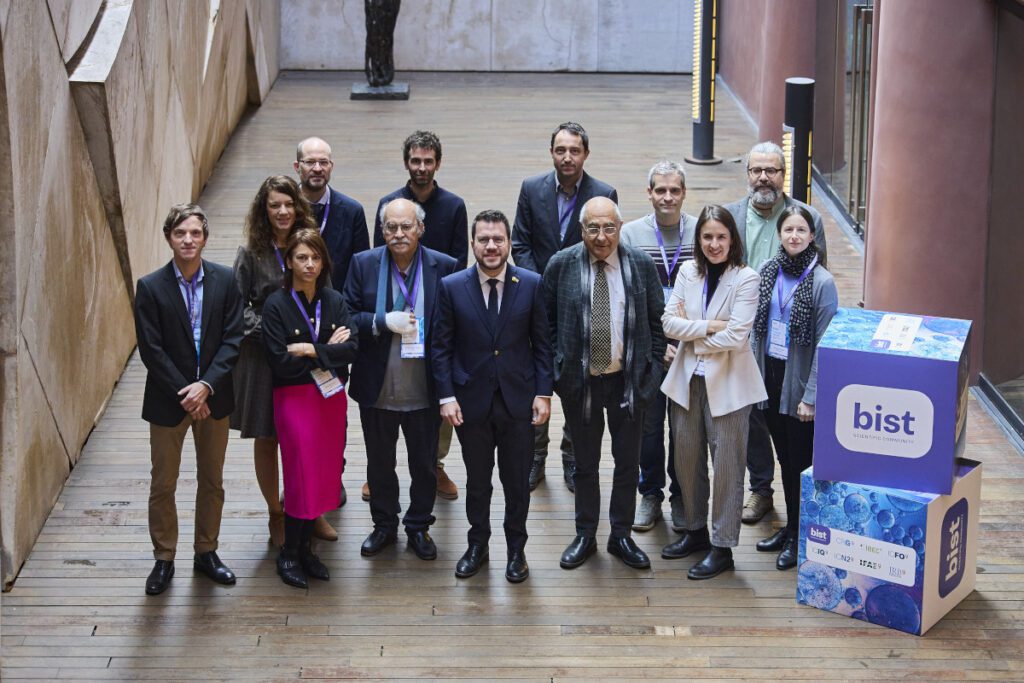
BIST Forum, una trobada per posar en valor la recerca de frontera
El BIST Forum ha tractat de com la ciència d’excel·lència potencia el desenvolupament de la societat i el creixement econòmic. Hi han assistit el president de la Generalitat, l’alcalde de Barcelona, els responsables de les màximes institucions econòmiques i els rectors de les principals universitats. A l’acte s’han anunciat els nous projectes BIST IGNITE per la recerca multidisciplinària, dels quals tres compten amb la participació de l’IBEC.
JOBS
Laboratory Technician at the Cellular and Molecular Mechanobiology Research Group
Ref: LT_PR // Deadline: 12/10/2025
Research Assistant position at the Cellular and Molecular Mechanobiology Research Group
Ref: RA-PR // Deadline: 27/06/2025
Research Assistant at the Cellular and Molecular Mechanobiology Research Group
Ref: RA-PR // Deadline: 18/10/2024
Postdoctoral Researcher at the Cellular and Molecular Mechanobiology Research Group
Ref: PR_PR // Deadline: 13/03/2024
Laboratory Technician at the Cellular and Molecular Mechanobiology Research Group (LT_PR)
Ref: LT_PR/Deadline: 20/02/2024
Postdoctoral researcher at the Cellular and Molecular Mechanobiology Research Group.
Ref: PR-PR //Deadline: 15/12/2023
Postdoctoral researcher at the Cellular and Molecular Mechanobiology Research Group
Ref: PR_PR/Deadline:20/11/2023
Research Assistant at the Cellular and Molecular Mechanobiology Research Group
Ref: RA_PR/Deadline:07/11/2023
Research Assistant at the Cellular and Molecular Mechanobiology Research Group
Ref: RA_PR/ Deadline: 16/10/2023


 ibecbarcelona.eu
ibecbarcelona.eu